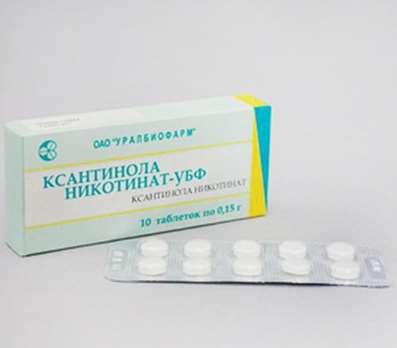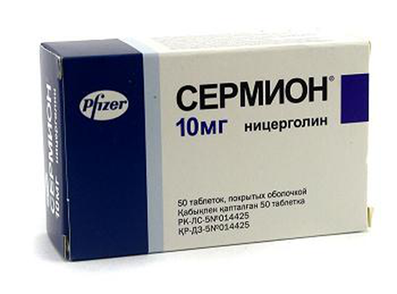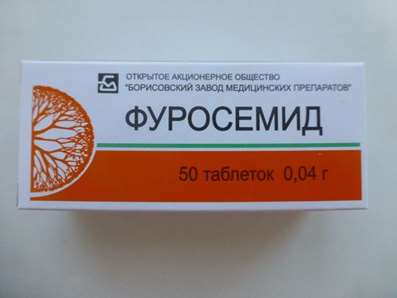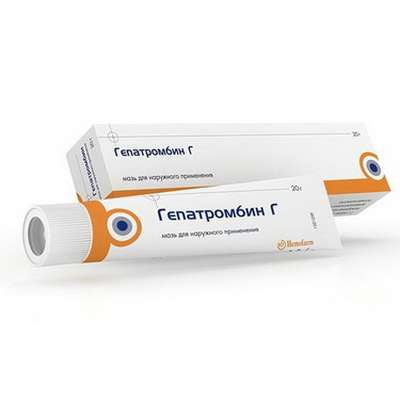Instruction for use: Aldomet
I want this, give me price
Trade name of the drug – Aldomet
ATX code C02AB02 methyldopa (racemic mixture)
Pharmacotherapeutic group: Alpha-adrenoceptor agonists
The nosological classification (ICD-10)
I10 Essential (primary) hypertension
Hypertension, Arterial hypertension, Arterial hypertension crisis course, Essential Hypertension
Primary hypertension, Arterial hypertension, complications of diabetes, hypertension, The sudden increase in blood pressure, Hypertensive disorders of blood circulation, hypertensive condition, hypertensive crises, hypertension, arterial Hypertension, malignant Hypertension, Hypertonic disease, Hypertensive crisis, Hypertension, accelerated hypertension, malignant hypertension, The aggravation of hypertensive disease, Transient hypertension, Isolated systolic hypertension
I15 Secondary hypertension
Arterial hypertension, complications of diabetes, hypertension, The sudden rise in blood pressure, Hypertensive disorders of blood circulation, hypertensive condition, hypertensive crises, hypertension, arterial hypertension, malignant hypertension, Hypertensive crisis, Hypertension, accelerated hypertension, malignant hypertension, hypertensive crisis, The aggravation of hypertensive disease, Transient hypertension, hypertension, Arterial hypertension, Arterial hypertension crisis course, renovascular hypertension, symptomatic hypertension, renal hypertension, Renovascular hypertension, Symptomatic hypertension
Code CAS 555-30-6
Characteristic
Antihypertensives. White or yellowish-white odorless powder. Soluble in water.
Pharmacological Properties of Aldomet Pharmachologic effect
hypotensive.
It affects the central mechanisms of blood pressure regulation. Methyldopa is converted to alpha-metilnoradrenalin which stimulates alpha2-adrenergic receptors of presynaptic membranes of neurons vasomotor center of the medulla oblongata and inhibits sympathetic impulses to the vessels.
After oral bioavailability varies, but the average is about 50%. Biotransformation begins in the lining of the gastrointestinal tract (ortosulfirovannye derivatives are formed). Tmax -. 2-6 hours Penetrates into the CNS, where about 10% of the dose is decarboxylated and beta-hydroxylated in alpha metildofamin, and then - in the alpha metilnoradrenalin. The liver conjugates formed with sulphates. Binding to plasma proteins - less than 20% (methyldopa), 30-40% - in the conjugates. The volume of distribution - not more than 0.29 l / kg. Excreted by the kidneys (approximately 70%), mainly in unmodified form, as well as O-sulfate conjugates, renal clearance is about 130 ml / min. Excretion is biexponential character - 1st phase in people with normal kidney function is 100-120 minutes (this period is excreted 90%), the 2nd phase of ingestion - about 2 hours T1 / 2 alpha metilnoradrenalina -. 1, 7 hours Complete elimination takes place within an average of 36 hours in severe renal insufficiency slows down (in the 1st phase is excreted only 50%), liver diseases -.. biotransformation. With prolonged use accumulates. Methyldopa is removed by hemodialysis and peritoneal dialysis.
Reduces round, causing hypotension. Increases glomerular filtration rate and renal blood flow, moderately suppresses plasma renin activity. It reduces tissue concentration of serotonin, dopamine, epinephrine. Minute volume of blood and renal blood flow did not change significantly. With prolonged use can cause regression of left ventricular hypertrophy with increased collagen content in the myocardium. After the first dose in some cases causing short-term hypertension. During exercise hypotensive effect is less. Slows sinus rhythm; delays the excretion of sodium and water, increases the activity of the baroreceptors, which may leads to the development of refractoriness during prolonged (1-1.5 months) treatment. Characteristic withdrawal. It causes sedation, decreasing by 2-3 weeks after start of treatment. The maximum reduction in blood pressure occurs in 4-6 hours and lasts for 1-2 days; during the first few days of treatment with the hypotensive effect gradually increases. The on / in the introduction of blood pressure reduction occurs within 2-3 h, peak effect - after 3-5 hours, duration - 6-10 hours.
Indications for Aldomet
Hypertension mild to moderate severity.
Contraindications for Aldomet
Hypersensitivity, hepatitis, liver cirrhosis, renal failure, pheochromocytoma, depression, acute myocardial infarction, cerebrovascular disease, severe coronary artery disease, autoimmune hemolytic anemia, collagen, parkinsonism, porphyria, the simultaneous use of MAO inhibitors, levodopa.
Restrictions on the use
Hepatitis (in history), acute left ventricular failure, diencephalic syndrome.
Pregnancy and breast-feeding
In experiments on rabbits, mice and rats that received doses up to 1000 mg / kg / day (16.6 times higher than the MRDC) revealed no adverse effects. Methyldopa passes through the placenta. Adequate and well-controlled studies in women methyldopa action in the I and II trimester of pregnancy has not been carried out. In the study of the use of methyldopa in the III trimester of pregnancy, adverse effects were found. Application of pregnancy is possible (on the strict condition).
Category effects on the fetus by FDA - B.
Be wary of lactation (methyldopa passes into breast milk).
Side effect of Aldomet
From the nervous system and sensory organs: weakness, fatigue, drowsiness, dizziness, headache (there are in the early stages of treatment and usually soon disappear), confusion, anxiety, Parkinson's disease, facial paralysis, spontaneous horeoatetoidnye movements, paresthesia, staggering when walking, deterioration of intelligence, symptoms of cerebrovascular insufficiency, mental status changes (including nightmares or unusually vivid dreams, depression, or anxiety state).
Cardio-vascular system and blood (blood, hemostasis): bradycardia, orthostatic hypotension, peripheral edema, flushing of the skin of the upper half of the body, increased angina, worsening symptoms of heart failure; rarely - myocarditis, pericarditis, reversible leukopenia and thrombocytopenia, autoimmune hemolytic anemia, eosinophilia.
From the digestive tract: dry mouth, nausea, vomiting, constipation / diarrhea, glossalgia, inflammation of the salivary glands, stomatitis, pancreatitis, colitis (severe or prolonged diarrhea or stomach cramps), abnormal liver function with the development of cholestasis, jaundice, hepatitis.
With the genitourinary system: hyperprolactinemia, gynecomastia, galactorrhea, amenorrhea, increased blood urea nitrogen, decreased libido, impotence.
Allergic reactions: rash, toxic epidermal necrolysis.
Other: arthralgia, myalgia, febrile syndrome, nasal congestion, lupus-like syndrome.
Interaction
The antihypertensive effect of reducing agonists and NSAIDs. In a joint application with haloperidol possible adverse effect on psihicheckuyu activities, in particular the emergence of disorientation and deceleration / difficulty thinking processes. It increases the risk of toxic effects of lithium salts (even while maintaining serum lithium concentration at the recommended therapeutic level).
should not be used in combination with MAO inhibitors (including furazolidone, procarbazine and selegiline), because, firstly, methyldopa may cause hyperexcitability in patients receiving MAO inhibitors and, secondly, there are reports of occurrence of headache, severe hypertension and hallucinations. The joint appointment with tricyclic antidepressants may reduce the antihypertensive effect of methyldopa (the need for careful monitoring of patients). The combined application may vary with levodopa antiparkinson effect of levodopa and possible additive toxic action on the central nervous system, in particular psychosis. To enhance the hypotensive effect it is advisable to use at the same time with hydralazine, diuretics and nifedipine. It is also possible with the use of verapamil, captopril.
The combination with anxiolytics enhances the hypotensive effect. When the pH of the urine while taking the patient urine alkalizing drugs, the effect of methyldopa is enhanced because concentration in the blood is maintained at a high level for a longer time, due to increased reabsorption in the renal tubules. When the acidification of urine methyldopa action decreases.
Be wary appoint patients receiving methyldopa, drugs for general anesthesia (halothane or thiopental sodium); ethyl ester is contraindicated. In patients receiving methyldopa, during general anesthesia may develop collaptoid state (it is advisable to termination of its acceptance for 7-10 days prior to general anesthesia).
Overdose of Aldomet
Symptoms: severe hypotension, bradycardia, lethargy, dizziness, tremors, drowsiness, nausea, vomiting, constipation / diarrhea, flatulence, atonic bowel.
Treatment: It is recommended gastric lavage or induction of vomiting, forced diuresis, appointment agonists (norepinephrine, epinephrine). Requires monitoring of heart rate, bcc, electrolyte balance, renal function, and central nervous system.
Routes of administration
Inside.
Precautions of Aldomet
To prevent the development of withdrawal symptoms it is recommended a gradual reduction in dose. Patients with renal impairment should be reduced single dose.
Keep in mind that after the cessation of the use of antihypertensive effect relatively quickly terminated, increased blood pressure usually occurs within 48 hours. In the course of therapy required monitoring of liver function and pattern of peripheral blood. When long-term therapy in the first 6-10 weeks of treatment and then every 6-12 months is recommended Coombs; when a positive direct Coombs test and hemolytic anemia requires removal and treatment of glucocorticoids. In the case of fluid retention and edema appearance prescribe diuretics, wherein the dose is reduced. In combination with other antihypertensive agents to reduce the recommended daily dose.
May mask the rise in temperature in infectious diseases. The drug and its metabolites react with standard chemical reagents used for the determination of catecholamines. Changes of physiological parameters / laboratory tests uric acid, serum creatinine and some other substances. The urine of patients during the treatment period when standing gets dark.
At the beginning of the treatment is not allowed to drive a vehicle and the other classes, potentially dangerous and require attention activities. In the future, the degree of limitation is determined depending on individual tolerance of drugs. During treatment excludes alcohol intake.

 Cart
Cart





